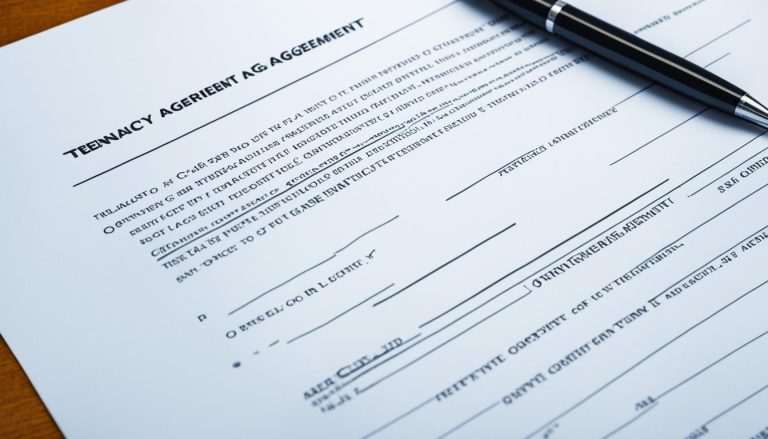For both landlords and tenants in the UK, understanding rent increase processes is vital to maintaining a fair and balanced rental relationship. Under Section 13 of the Housing Act 1988, landlords can propose rent increases for periodic tenancies, but this process must adhere to legal guidelines to ensure fairness. For tenants, understanding their rights and options is equally important to avoid unexpected financial burdens.
This guide will provide a step-by-step look at the Section 13 rent increase process, offering clarity on how landlords can legally increase rents and what tenants can do if they disagree with the proposed changes. Let’s explore the key steps and rights both parties should be aware of during a Section 13 rent increase.
What is Section 13 Rent Increase?

Under Section 13 of the Housing Act 1988, landlords have the legal right to propose rent increases on periodic tenancies. These are tenancies that have moved beyond a fixed-term agreement and now operate on a rolling basis, either monthly or weekly, depending on the initial tenancy agreement.
The Section 13 rent increase mechanism was introduced to give landlords the flexibility to adjust rent to match current market conditions. However, this increase cannot be arbitrary. The landlord must follow a structured legal process, and the rent hike must be considered fair and reflective of the property’s value in the current market.
If the tenancy agreement already includes a clause about how rent increases should be handled, then Section 13 may not apply. In such cases, landlords must follow the agreed-upon terms. However, if no such clause exists, Section 13 becomes the tool for adjusting rent.
Periodic tenancies generally occur after the initial fixed term has ended, meaning both landlord and tenant are continuing on a less formal, rolling arrangement. This flexibility often suits both parties, but it also necessitates a clear, legal process when it comes to rent adjustments.
When Can a Landlord Use Section 13 for Rent Increases?
Landlords must adhere to specific conditions before invoking Section 13. Importantly, Section 13 cannot be used during the fixed-term period of a tenancy. It applies only once the tenancy has become periodic, which means the fixed term has expired, and the tenancy continues on a rolling basis.
Here are the conditions that govern when and how landlords can use Section 13:
- No Rent Increase Clause in the Tenancy Agreement: Section 13 can only be used if the tenancy agreement does not already specify how rent will be increased. If the tenancy agreement includes a rent review clause, that procedure must be followed instead of using Section 13.
- 12-Month Limitation: A landlord cannot issue more than one rent increase within a 12-month period under Section 13. This prevents frequent changes that could financially destabilise tenants.
- Notice Requirement: The landlord must give tenants a minimum of one month’s notice before the new rent is due to take effect. For tenancies where rent is paid annually, the notice period is extended to six months.
- Use of Official Form: The rent increase notice must be issued using the correct legal format, known as the Section 13(2) form. This form clearly states the proposed new rent and the date the increase will take effect.
By adhering to these conditions, landlords ensure that the rent increase process is both legal and transparent. Failure to follow these rules could result in the rent increase being deemed invalid.
How to Serve Section 13 Rent Increase Notice?

Serving a Section 13 notice is a formal process that landlords in the UK must follow to legally propose a rent increase for tenants on a periodic tenancy (rolling weekly or monthly arrangement). The notice must meet certain legal requirements to ensure the process is valid and binding.
Steps to Serve a Section 13 Notice
1. Ensure Eligibility
- Confirm tenancy type: The notice can only be served for periodic tenancies—where the fixed term of the tenancy has expired and the tenancy has continued on a rolling basis. It cannot be used during a fixed-term tenancy unless there’s no provision for rent increases in the tenancy agreement.
- 12-month limit: Make sure the rent has not been increased in the last 12 months, as landlords are only allowed to increase rent once per year using a Section 13 notice.
2. Use the Correct Form
- The rent increase must be proposed using the official Section 13(2) form, which is available from the government’s website or legal resources. The form clearly states the proposed new rent and the date it will come into effect.
- Ensure all fields in the form are filled out correctly, including the landlord’s and tenant’s details, the property address, the current rent, and the proposed new rent.
3. Give Proper Notice Period
- For most periodic tenancies (weekly or monthly payments), the landlord must give at least one month’s notice before the new rent takes effect.
- For annual tenancies, landlords are required to give at least six months’ notice.
- The date on the form must clearly state when the new rent will start, ensuring that the tenant has sufficient notice.
4. Serve the Notice Correctly
- The Section 13 notice must be delivered to the tenant in one of the following ways:
- In person: Handing the notice directly to the tenant.
- By post: Sending it to the tenant’s address via recorded delivery, so there’s proof it was sent.
- By email: If the tenancy agreement allows for notices to be served electronically, this can be a valid method.
5. Keep a Record
- It’s essential to keep a copy of the completed Section 13 notice and proof that it was delivered to the tenant (such as a postal receipt or delivery confirmation).
- This is crucial in case the tenant disputes receiving the notice or if the rent increase is challenged in the future.
6. Be Prepared for a Tenant Challenge
- After receiving a Section 13 notice, tenants have the right to challenge the rent increase if they believe it is unfair or excessive. They can apply to the First-tier Tribunal (Property Chamber) to determine if the proposed rent is in line with the local market.
- If the tenant challenges the increase, the tribunal will review evidence from both sides and decide whether the new rent is reasonable.
Section 13 Notice Template
Here’s a Section 13 Notice template that landlords can use to propose a rent increase for a periodic tenancy. This template is based on the official Section 13(2) form under the Housing Act 1988.
Form for Increasing Rent under Section 13(2) of the Housing Act 1988
SECTION 13(2) NOTICE OF INCREASE OF RENT UNDER AN ASSURED TENANCY OR ASSURED AGRICULTURAL OCCUPANCY
To: [Tenant’s Full Name]
Address of Property:
[Property Address]
Current Rent: £[Current Rent Amount] per [week/month]
Proposed New Rent: £[New Rent Amount] per [week/month]
Effective Date of Rent Increase:
[Day/Month/Year]
Dear [Tenant’s Name],
I am writing to formally notify you of a proposed increase in rent for the property you currently occupy at the address listed above. The new rent will be £[New Rent Amount] per [week/month], which will take effect on [Effective Date]. This rent increase is proposed under Section 13(2) of the Housing Act 1988.
Notice Period:
In compliance with the law, I am providing you with at least one month’s notice (or six months if rent is paid annually) from the date of this notice. The proposed new rent will become due from [Effective Date].
What You Should Do:
If you agree with the new rent, you will begin paying the increased amount from the effective date mentioned above. If you wish to challenge the proposed increase, you may apply to the First-tier Tribunal (Property Chamber) for an independent review of the rent. To do this, you must submit your application before the date the new rent becomes effective.
The tribunal will assess whether the proposed rent reflects the fair market value of the property and make a decision accordingly.
Landlord’s Details:
Name: [Landlord’s Full Name]
Address: [Landlord’s Address]
Phone Number: [Landlord’s Phone Number]
Email: [Landlord’s Email]
Date: [Day/Month/Year]
Tenant’s Details:
Name: [Tenant’s Full Name]
Signature: ____________________
Date of Receipt: [Day/Month/Year]
Important Notes for the Tenant:
- This notice is issued in accordance with Section 13(2) of the Housing Act 1988.
- If you do not agree with the proposed increase, you have the right to challenge it by applying to the First-tier Tribunal before the effective date of the new rent.
- Failure to challenge before this date will mean that the proposed rent increase automatically applies.
[Landlord’s Signature]
[Date Signed]
This template must be adjusted based on specific details and delivered according to legal requirements. Ensure that a record of the notice delivery is kept (e.g., through recorded post or email confirmation) to avoid disputes.
What Can Tenants Do in Response to a Section 13 Notice?

Tenants who receive a Section 13 rent increase notice are not obliged to accept the new rent if they feel it is excessive or unjustified. As a tenant, you have several options to consider:
- Accept the Rent Increase: If the increase seems fair and reasonable, and aligns with the local rental market, you may choose to accept the new rent without issue. This is often the simplest route, especially if the increase is minor.
- Negotiate with Your Landlord: If the proposed increase feels too high, tenants can negotiate with their landlords. This can lead to a compromise, such as a phased or smaller increase. Open dialogue can prevent the need for formal dispute processes.
- Challenge the Increase: If the tenant believes the increase is unfair or exceeds market value, they can challenge it by applying to the First-tier Tribunal (Property Chamber). This is an independent body that will assess whether the proposed rent is in line with the market value of similar properties in the area.
To challenge the increase, tenants must submit an application to the tribunal before the proposed rent increase date takes effect. The tribunal will review both the landlord’s reasoning and evidence for the increase, as well as the tenant’s arguments against it.
What Happens if a Tenant Disagrees with the Rent Increase?
If a tenant disagrees with the proposed rent increase and decides to challenge it, the matter can be taken to the First-tier Tribunal (Property Chamber). Here’s what happens during this process:
- Submitting Evidence: Both the landlord and tenant will need to provide evidence to support their case. The landlord might present details of local rental rates and improvements made to the property, while the tenant might argue that the increase is out of step with market conditions.
- Tribunal Review: The tribunal will review the evidence and assess whether the proposed rent reflects fair market value. They consider factors such as the condition of the property, local rental trends, and the tenant’s existing rent.
- Decision: The tribunal can decide to either approve the proposed increase, lower the increase, or cancel it entirely. If the tribunal agrees with the tenant that the proposed rent is too high, the increase will not take effect, and the tenant will continue paying the rent.
This tribunal process provides an impartial forum to resolve disputes, ensuring that rent increases remain fair and consistent with the market.
How to Avoid Rent Disputes?: Best Practices for Landlords and Tenants
Disputes over rent increases can be time-consuming and stressful for both landlords and tenants. However, there are steps that both parties can take to prevent disagreements:
- Open Communication: Landlords should informally discuss potential rent increases with tenants well before issuing a formal Section 13 notice. This allows tenants to prepare and raises the chance of reaching a mutually agreeable solution.
- Market Research: Both landlords and tenants should be aware of local rental trends. Landlords can justify a proposed increase by presenting evidence of similar properties’ rents, while tenants can assess whether the new rent is in line with the area.
- Consider Gradual Increases: Landlords might offer a phased increase, particularly if the new rent is significantly higher than the current rate. This allows tenants to adjust more easily to the higher costs.
- Negotiate Terms: Instead of resorting to a tribunal, landlords and tenants can often settle disputes through negotiation. A compromise on the amount of the rent increase or the time frame for implementation can help avoid legal proceedings.
By following these best practices, landlords and tenants can often avoid formal disputes and maintain a healthy rental relationship.
What Are the Several Other Ways Landlords Can Legally Increase the Rent in the UK?

In addition to a Section 13 rent increase, there are several other ways landlords can legally increase the rent in the UK. Each method depends on the type of tenancy agreement in place, the relationship between the landlord and tenant, and the terms of the contract. Here are the main alternatives to a Section 13 rent increase:
1. Rent Review Clause in the Tenancy Agreement
One of the most straightforward ways for a landlord to increase the rent is through a rent review clause included in the tenancy agreement.
- How it Works: Many fixed-term tenancy agreements, particularly Assured Shorthold Tenancies (AST), contain a rent review clause. This clause sets out the conditions under which the landlord can increase the rent during the fixed term. The agreement may specify how often and by how much the rent can be increased.
- Timing and Procedure: The rent review clause might allow for annual increases or specify that increases must align with inflation or market rates. The landlord is bound by the terms of this clause, and tenants will have agreed to it when they signed the tenancy agreement.
- Advantages: A rent review clause is a pre-agreed mechanism, so tenants are aware of potential increases. It avoids the need for formal notices and tribunals since the method is already outlined in the contract.
2. Mutual Agreement Between Landlord and Tenant
Another common way to increase rent is by mutual agreement between the landlord and tenant.
- How it Works: In some cases, landlords and tenants may negotiate a new rent level outside of formal legal processes. This is more likely to happen if the tenant values their current accommodation and is willing to agree to a reasonable increase, or if the landlord seeks to avoid formal notices.
- Timing and Procedure: There are no formal rules governing the timing of rent increases in this case. However, both parties must agree on the amount, and it’s typically done in writing to avoid disputes later on.
- Advantages: This method can foster a positive landlord-tenant relationship, allowing flexibility in negotiating rent increases. It can also be quicker and less formal than other methods, particularly if both parties are on good terms.
3. Increasing Rent at the End of a Fixed-Term Tenancy
Landlords can also increase the rent when a fixed-term tenancy ends and the tenant wishes to remain in the property.
- How it Works: At the end of a fixed-term tenancy (for example, after a 6-month or 12-month agreement), the landlord can propose a new tenancy agreement with a higher rent. The tenant has the option to accept the new terms or negotiate.
- Timing and Procedure: This increase happens when a new agreement is drawn up. The landlord does not need to issue a formal Section 13 notice because the increase occurs as part of a new fixed-term contract.
- Advantages: Both parties have the opportunity to renegotiate terms, and the landlord can adjust the rent to reflect the current market without using Section 13, making it a natural point for discussing changes.
4. Rent Increase During a New Fixed-Term Agreement
If a tenant agrees to sign a new fixed-term agreement with the landlord, this can be an opportunity for the landlord to propose a rent increase.
- How it Works: A new fixed-term agreement may be signed when the old one ends. The new agreement can have revised terms, including a higher rent, which both parties must agree to. This avoids the use of Section 13 since a new contract replaces the old one.
- Timing and Procedure: The landlord may propose a new rent during negotiations for the new tenancy agreement. The tenant has the right to either agree to the increase or negotiate different terms.
- Advantages: This approach gives both landlord and tenant the opportunity to agree on new terms, providing flexibility and preventing disputes over unexpected increases.
5. Rent Increase with Tenant Consent
Landlords may propose a fair rent increase at any time during a periodic tenancy if the tenant agrees.
- How it Works: Even in the absence of a rent review clause, landlords can discuss a rent increase directly with tenants. If the tenant consents to the new rent amount, the landlord can increase the rent without issuing a Section 13 notice.
- Timing and Procedure: This can happen at any time during a periodic tenancy, and the tenant’s consent ensures that the process is smooth and avoids legal disputes.
- Advantages: This is the least formal approach and is based on mutual agreement. It can help maintain a positive relationship and avoid more structured legal processes.
6. Fair Rent for Regulated Tenancies
For tenants who have a regulated tenancy, landlords can apply to have a fair rent registered with the Rent Officer.
- How it Works: A regulated tenancy is a type of protected tenancy, usually dating back before 15 January 1989. For such tenancies, landlords must apply to the Rent Officer to set a fair rent, which will be legally binding.
- Timing and Procedure: Fair rents are generally reviewed every two years or upon request by the landlord or tenant. The Rent Officer will determine whether the current rent reflects the market conditions and the state of the property.
- Advantages: This method protects tenants from excessive rent increases, as the Rent Officer ensures that the rent is reasonable and fair for both parties. However, it only applies to regulated tenancies, which are now quite rare.
Legal Limits and Fair Rent Practices in the UK

In the UK, landlords are generally free to set the rent level they deem appropriate for their property, but there are legal limits to prevent unfair increases:
- Rent Controls: While there are no strict national rent controls in place, local councils may impose limits in certain areas, especially where housing demand outstrips supply.
- Market Rates: Any rent increase under Section 13 must be in line with the market rate for similar properties in the area. Rent that exceeds the average for comparable homes may be deemed excessive by a tribunal.
- Tenant Rights: Tenants have legal protection from unreasonable rent increases. They can challenge increases that don’t align with market conditions, particularly through the tribunal system. This ensures that rents remain fair and that tenants are not subjected to exploitative practices.
Both landlords and tenants should stay informed about their legal rights and the limitations imposed by local authorities to ensure that rent increases are appropriate and justified.
Conclusion
A Section 13 rent increase can be a necessary adjustment for landlords, but it must be handled with care and transparency. Tenants, on the other hand, have rights to challenge any increases they deem unfair.
By understanding the steps involved, both parties can navigate the process effectively, maintaining fairness and avoiding unnecessary conflict. Whether you’re a landlord looking to issue a rent increase or a tenant considering your options, following the right legal procedures is essential to achieving a fair outcome.
FAQs About Section 13 Rent Increase
Can a landlord raise rent during a fixed-term tenancy?
No, a landlord cannot raise the rent during a fixed-term tenancy unless the tenancy agreement includes a specific rent review clause. Section 13 can only be used once the tenancy has become periodic.
How much notice must a landlord give for a rent increase?
For periodic tenancies, landlords must provide at least one month’s notice before the new rent comes into effect. For tenancies where rent is paid annually, the notice period is extended to six months.
Can a tenant refuse a Section 13 rent increase?
Yes, tenants can refuse a Section 13 rent increase by formally challenging it. They can apply to the First-tier Tribunal for an independent review of whether the proposed increase is fair.
What happens if the tribunal agrees with the landlord?
If the tribunal agrees with the landlord that the proposed rent increase reflects the market rate, the tenant will have to pay the new rent from the date specified in the notice.
How can tenants ensure their rent is fair?
Tenants can research the local rental market to compare rates for similar properties. They can also consult housing advice organisations like Shelter for guidance on what constitutes fair rent in their area.
Is there a limit to how much rent can be increased?
There is no set legal limit on how much rent can be increased under Section 13, but the increase must be reasonable and reflective of the current market conditions.
What are the best practices for landlords to avoid disputes?
Landlords should maintain open communication, provide adequate notice, and ensure that any rent increase is based on market conditions and the property’s condition to avoid disputes with tenants.






